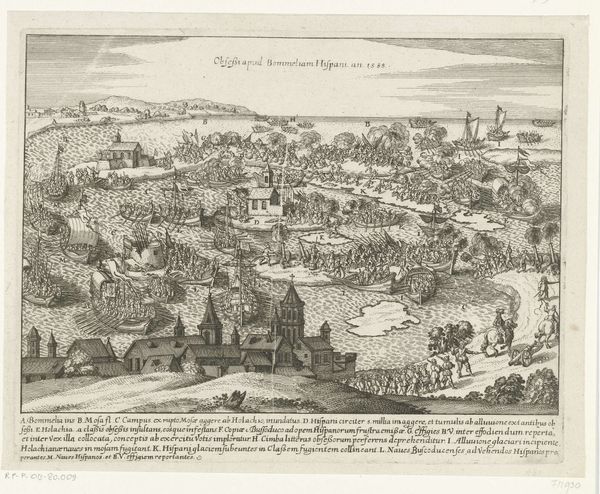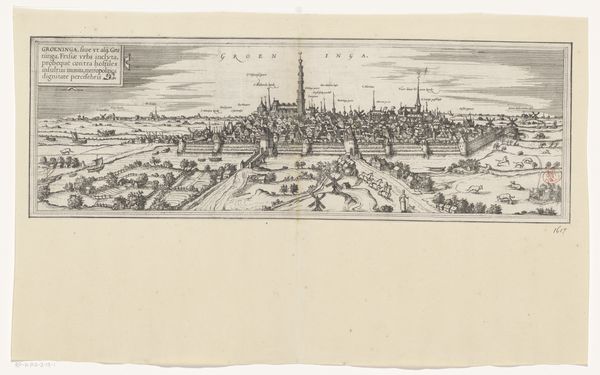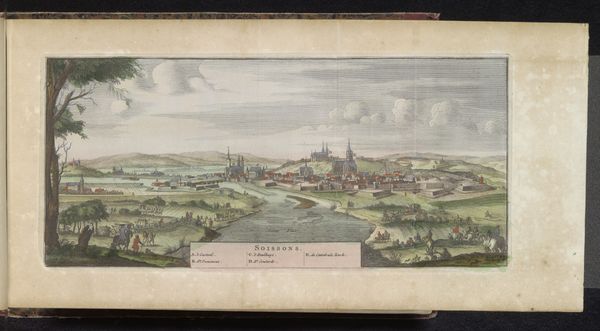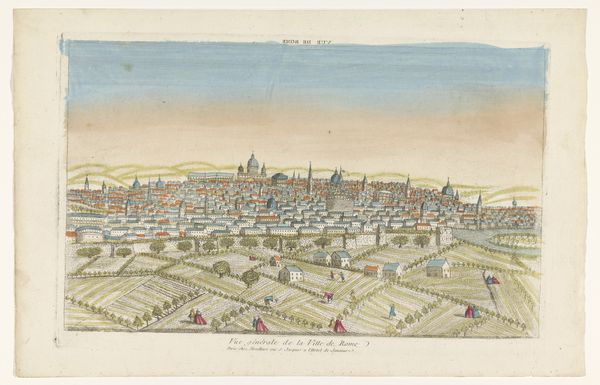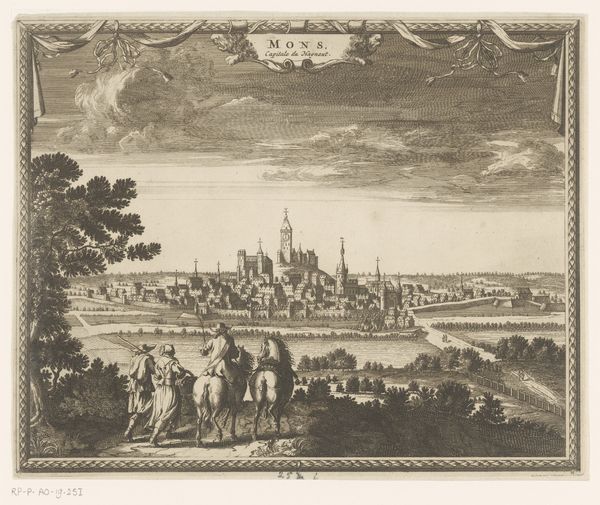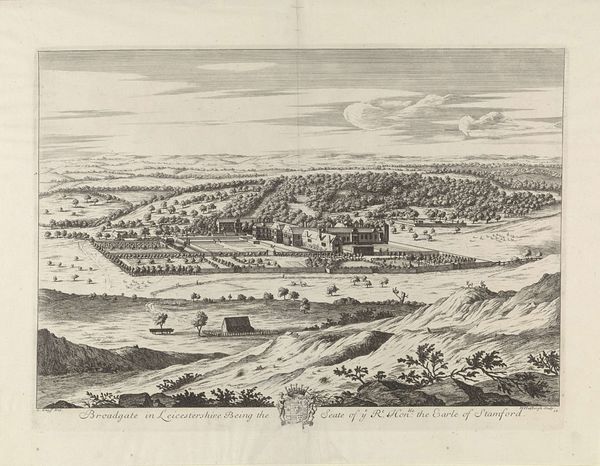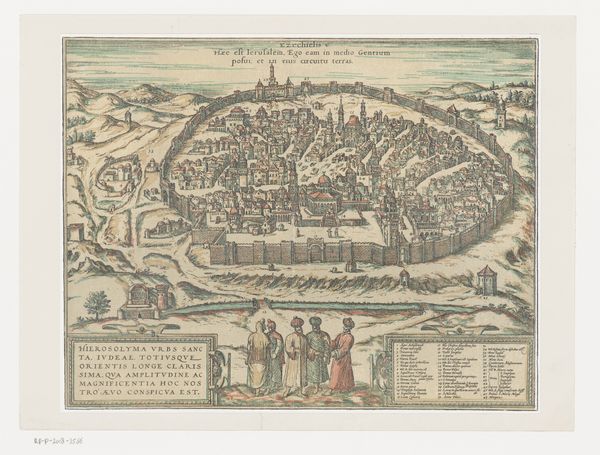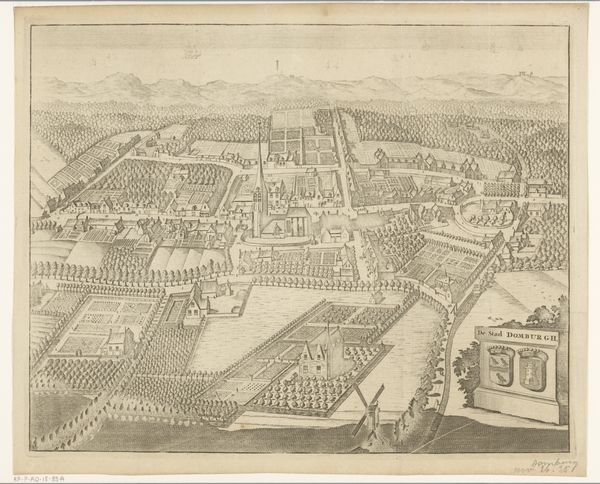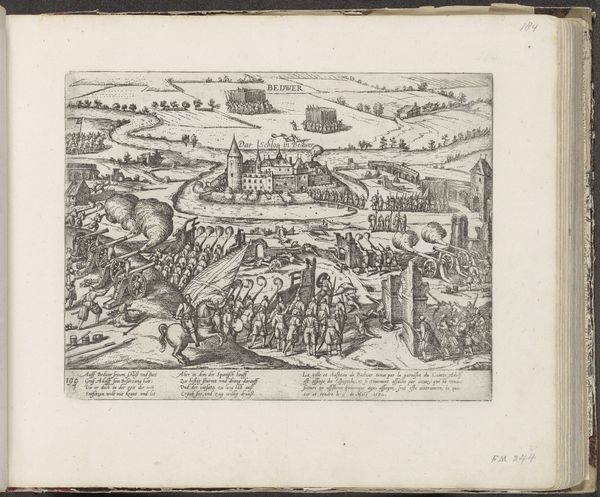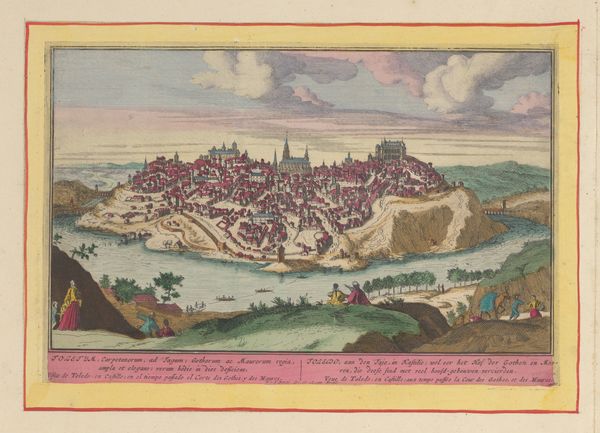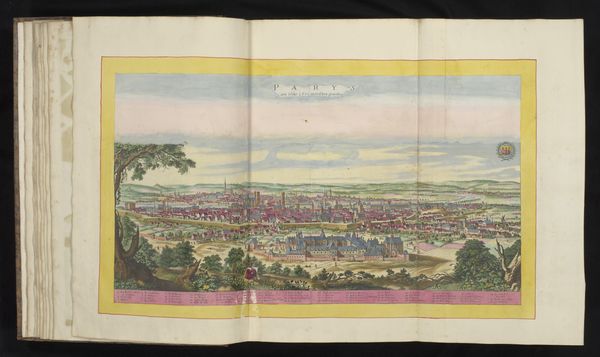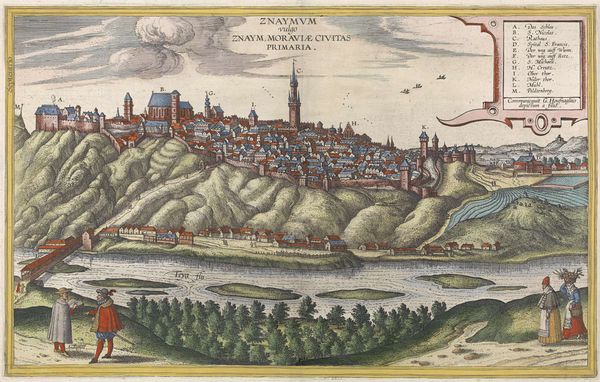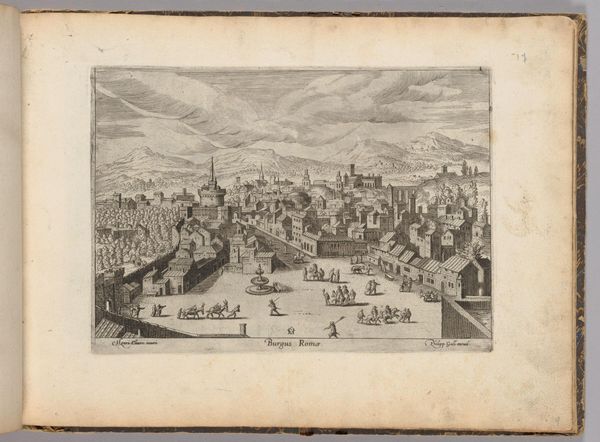
drawing, print, watercolor
#
drawing
#
water colours
#
baroque
# print
#
landscape
#
watercolor
#
coloured pencil
#
cityscape
Dimensions: height 179 mm, width 240 mm
Copyright: Rijks Museum: Open Domain
Curator: Let’s talk about Pieter van den Berge’s, "Gezicht op de stad Valladolid", a cityscape created sometime between 1694 and 1737, employing watercolor and print. It offers us a bird’s-eye view of the city. Editor: My first impression is that it's a very meticulously crafted depiction. The details, especially in the landscape and cityscape, seem so precise, almost architectural in their rendering. Curator: Precisely! The detailed representation lends itself to an understanding of the city’s power structures and its relationship with the surrounding resources. The landscape framing the city becomes integral, signaling access and dominion. It also gives insight into the role of the church as we notice many temples, which is further affirmed through the scripture present on the print. Editor: Yes, looking at the fields and what seem like cultivated gardens, it’s clear how the resources are being methodically structured, even contained. You see evidence of intensive labor throughout. It speaks to how land was used to define and maintain the economy of the city. Curator: Right. And if you consider the baroque stylistic influence, that plays directly into how such power was represented visually. Note how space is being claimed and demarcated, how control is asserted, not just over the immediate area, but implicitly over everything this scene overlooks. Editor: Absolutely. I’m interested in the actual process: creating this intricate image, etching the details, applying colors with what looks to be calculated precision. How much time and specialized skill went into this? And what was its purpose? Was it for government record, for landowners or aristocrats? Curator: The labor certainly elevates it, I think. The meticulous nature pushes us to question its utility as evidence, but to appreciate its intention to portray an ascendant and flourishing city. Editor: I concur. Analyzing it in detail unearths so many layers of significance regarding labor, class, power and representation. Curator: Indeed. Thinking through all the sociopolitical and structural elements at play enriches the ways that we perceive cities—not just in art, but how they form even today.
Comments
No comments
Be the first to comment and join the conversation on the ultimate creative platform.
